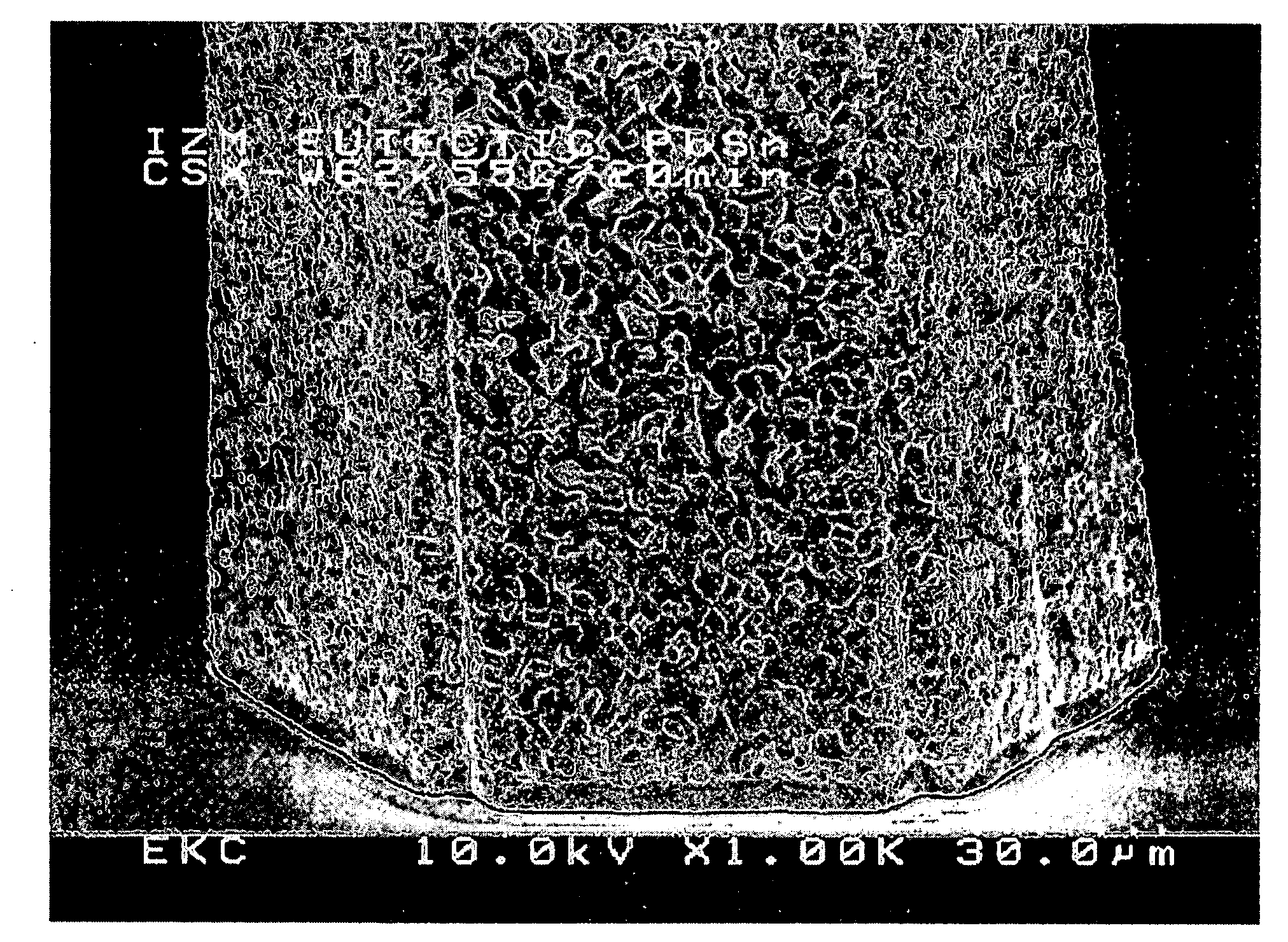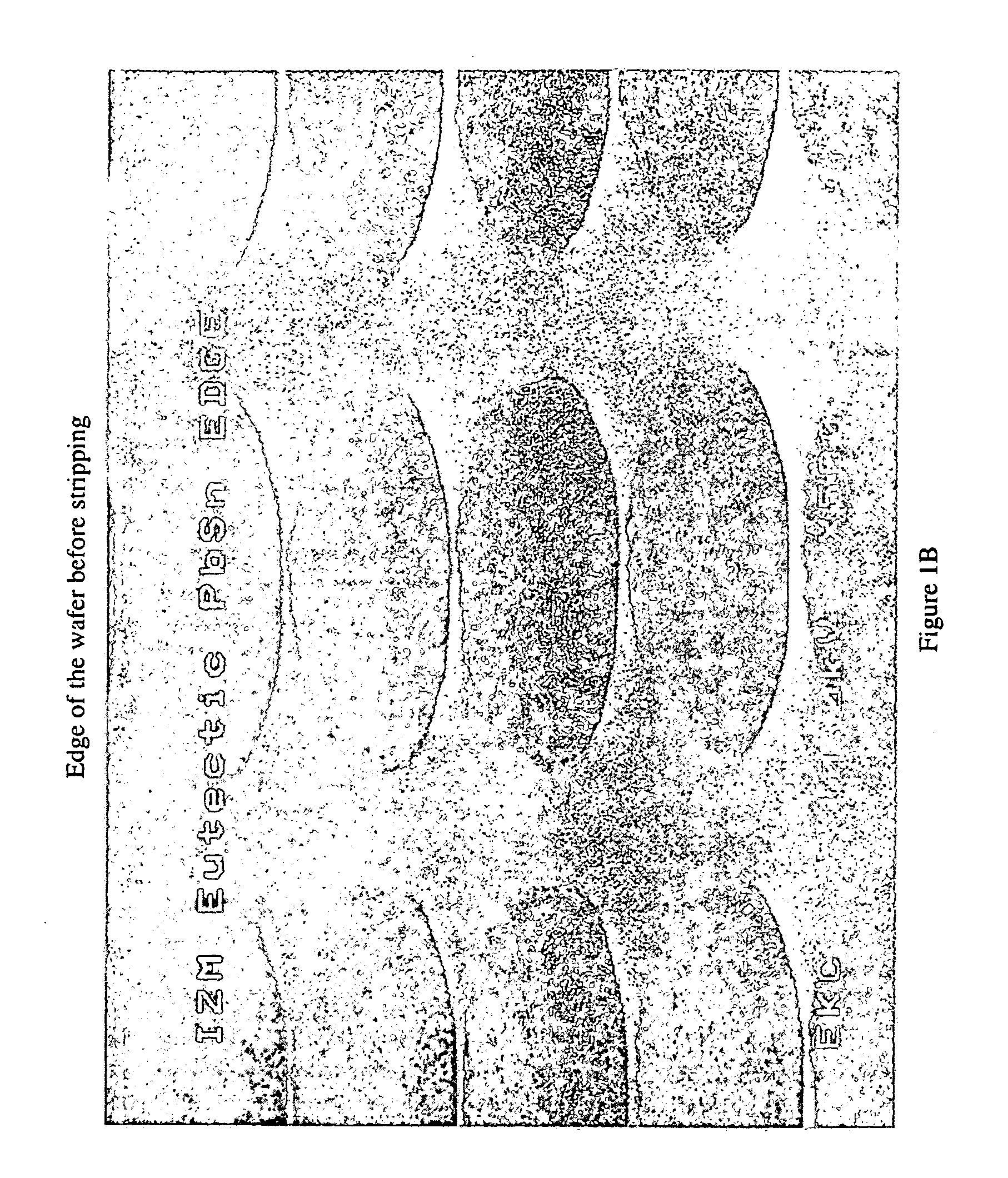Compounds for Photoresist Stripping
a technology of photoresist and compound, applied in the field of cleaning composition, can solve the problems of affecting the cleaning effect of photoresist, affecting the cleaning effect, so as to improve the cleaning effect and the cleaning ability
- Summary
- Abstract
- Description
- Claims
- Application Information
AI Technical Summary
Benefits of technology
Problems solved by technology
Method used
Image
Examples
Embodiment Construction
[0072]Photoresist polymer is usually difficult to dissolve in cleaning compositions, many of which contain a quaternary ammonium compound and a solvent. In most cases, the polymer, if removed at all, is lifted in large pieces and rinsed away from the substrate. The simple quaternary ammonium compound / solvent blends just do not have enough chemical activity to break down tough polymers even at elevated temperatures and prolonged contact time.
[0073]Applicants have discovered a composition for removing photoresist polymer and post etch residual from the substrate, this new composition comprising hydroxylamine (HDA®) or a hydroxylamine derivative, a quaternary ammonium compound, and at least one polar organic solvent. Such compositions result in an enhanced ability of the compound to dissolve polymer. Hydroxylamine or a hydroxylamine derivative also stabilizes the quaternary ammonium compound and thus prolongs the bath life of the compound.
[0074]The compositions of the invention show go...
PUM
| Property | Measurement | Unit |
|---|---|---|
| temperatures | aaaaa | aaaaa |
| temperature | aaaaa | aaaaa |
| temperature | aaaaa | aaaaa |
Abstract
Description
Claims
Application Information
 Login to View More
Login to View More - R&D
- Intellectual Property
- Life Sciences
- Materials
- Tech Scout
- Unparalleled Data Quality
- Higher Quality Content
- 60% Fewer Hallucinations
Browse by: Latest US Patents, China's latest patents, Technical Efficacy Thesaurus, Application Domain, Technology Topic, Popular Technical Reports.
© 2025 PatSnap. All rights reserved.Legal|Privacy policy|Modern Slavery Act Transparency Statement|Sitemap|About US| Contact US: help@patsnap.com



